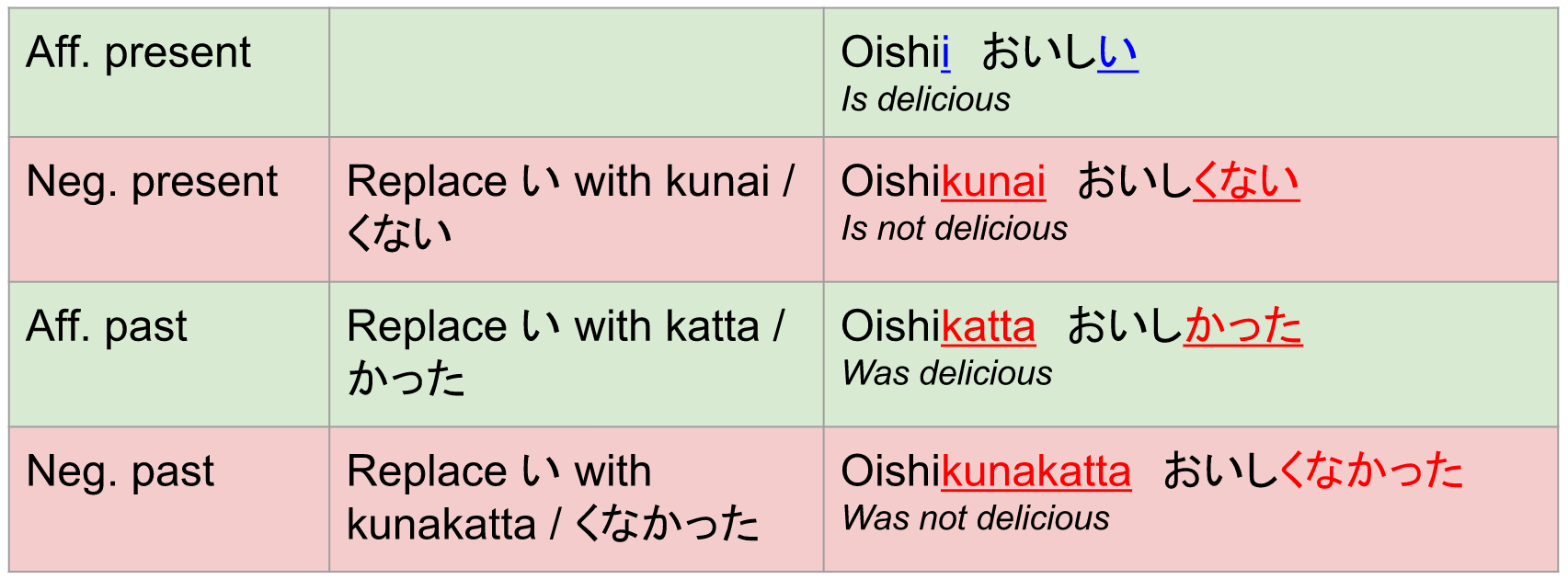Lecture 2
い adjectives
We will only focus on い adjectives for now. There are only two types of adjectives, the other being な adjectives.
とても (totemo) can be added in front of an adjective to mean "very."
Another basic sentence structure
THINGは ADJECTIVEです
Here is another sentence structure that can be used when you don't necesarily want to use a verb in your sentence, but an adjective instead.
Conjugation for い adjectives

We will only focus on い adjectives for now. There are only two types of adjectives, the other being な adjectives.
とても (totemo) can be added in front of an adjective to mean "very."
New particle: に (ni)
に is used when the verb is done to / into / towards the object
- Kouen ni ikimasu = go to the park
- Gakkou ni arukimasu = walk to school
- Daisuke ni agemasu = give to Daisuke
Possessive particle: の (no)
To indicate that a noun belongs to another noun, use の
- Natsumi-san no denwa = Natsumi’s phone
To want to *verb* (~たい form)
Ex. I will eat sushi => I want to eat sushi.
Replace ます with たい (tai)
- すしをたべます。ー>すしをたべたいです。
- Sushi wo tabemasu -> Sushi wo tabetai desu.
You will have to end the sentence with desu when your sentence ends with this form, even though it’s technically a verb and you use a particle.
Conjugation for ~たい form
Luckily, the conjugations are the same as い adjectives, shown in the table above. Just replace the い in たい with the appropriate conjugation.